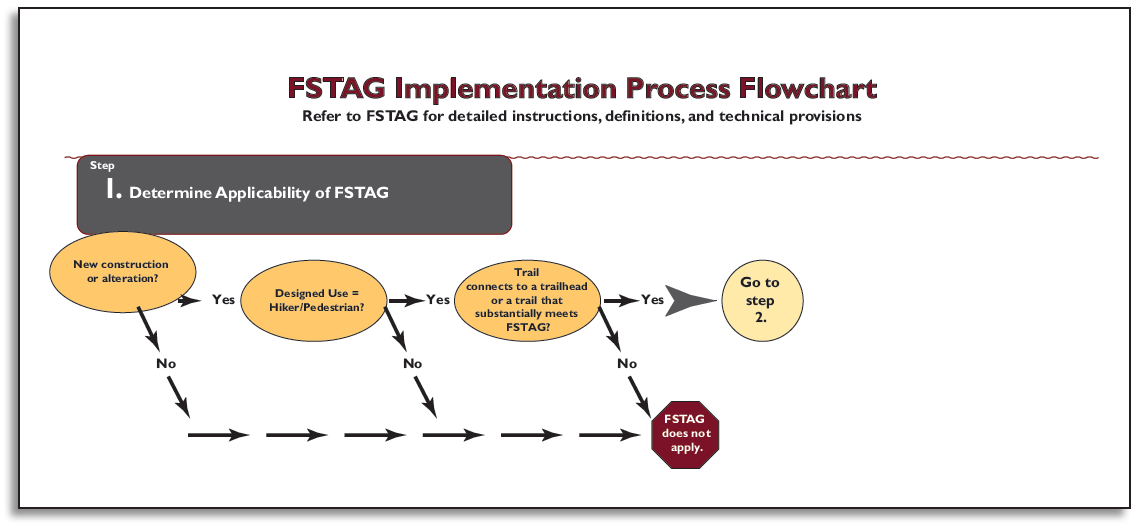Step 1: Determine the Applicability of FSTAG
After a decision has been made to design or alter a trail, three questions must be asked:
1. Does the work meet the definitions for new construction or alteration? Definitions are in "Understanding Trail Terminology" of this guidebook.
-
If yes,
2. Is the Designed Use "Hiker/Pedestrian"?
-
If yes,
3. Does the proposed trail connect to a trailhead or to a trail that substantially complies with FSTAG? (Trailhead is defined in "Understanding Trail Terminology.")
If the answer to any of these questions is no, FSTAG does not apply and no further analysis is required. The finding and reasons that FSTAG does not apply should be briefly documented and put in the project file. Figure 140 shows step 1. Even if compliance with FSTAG is not required, you should try to incorporate accessibility where opportunities exist and to the extent you can without changing the character of the setting and, therefore, the hiking experience.
If the answer to all three questions is yes, the designer moves to step 2.

Figure 140—Step 1 of the Forest Service Trail Accessibility Guidelines implementation process. (For a larger image please click here.)
Design Tip
Evaluate your trail design for Forest Service Trail Accessibility Guidelines (FSTAG) compliance using on-the-ground layout.
In order to work through steps 2, 3, and 4 of the implementation process, lay out a proposed trail alignment on the ground and conduct the evaluation as you walk the flag line. Base the review and analysis required in these steps on actual field conditions, rather than relying only on topographic maps.

User Comments/Questions
Add Comment/Question